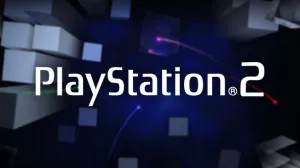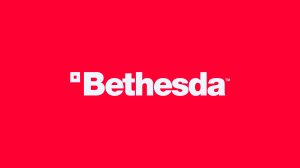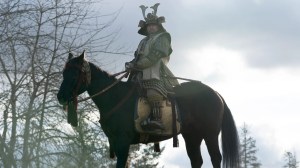
Technology has been ever more present in our daily lives over the past decades, but became truly pervasive with the invention of the smartphone and the rise of social media. Now, there’s an endless stream of content constantly at our fingertips. All we need to do is reach into our pockets to access is.
Videos by ComicBook.com
But to what end? That’s the question writer Rick Remender and artist Sean Murphy posed when they went about creating Tokyo Ghost, an Image Comics series that look ahead to earth’s dystopian, technology saturated future. The series follows Debbie Decay, a young woman who has completely abstained from such technological excesses, and her boyfriend Led Dent, who has all but completely succumbed to technologies temptation, as they make a play to get out of the Isles of Los Angeles once and for all.
With the first trade paperback collection of the series, Tokyo Ghost Vol. 1: Atomic Garden, hitting store shelves, Remender took the time to speak to ComicBook.com about the ideas that shape Tokyo Ghost, its world, and its characters.
Would you tell me the genesis of Tokyo Ghost?
RR: We started developing the book a couple of years ago, and one of the things that we both wanted to explore was the depth that society might find their technological addictions reaching, in that we were basically discussing at length the inability to go out to dinner with people and not have everyone on their cell phones, checking every five or ten minutes, our own addictions to checking the computer, and the phone, and the iPad, and the Kindle, and basically, at this point, there’s a screen or a monitor in every inch of my life.
We started to play with doing a dystopic, Road Warrior, Blade Runner future where we could play with that taken to its nth degree. The thing that got me most excited about that was the idea of humanity using these technological distractions in order to look away from what’s actually happening that’s important and fixate on meaningless, trivial entertainment and social media feeds and play more online. More people are interested in Kanye West in being a sociopathic asshole on the internet than they are interested in the arctic shell melting. It will irrevocably change the history of mankind forever, and so it was an examination of that and taking that to the nth degree.
The world that they live in is one where they live in putrid squalor, and the oceans have risen up, and the air is contaminated, and everything is awful, but no one cares because they are dialed into 25 different feeds and constantly inundated with useless information to keep them distracted from the true world around them.

We see this world through the point of view of our main characters, Debbie Decay and Led Dent – or Teddy, depending on his current state of being. I found their relationship fascinating partly because of how it inverted the manic pixie dream girl trope. Instead of Debbie simply elevating Teddy’s existence, it’s Teddy who is dragging Debbie down. How did all of the high concepts of Tokyo Ghost end up circling around these two characters?
RR: It was such a strange and organic process. We were developing the book and the world, and the state of the world, and Tokyo being the counterweight to the Isles of Los Angeles. It became critical to Sean and I that Debbie was our POV character and was the most interesting character. One of the reasons for me is that we have this wonderful influx of female readers and this huge influx of female characters and female focus characters and there’s all manner of different kinds. One thing that is important to me is that characters feel like human beings and that they not be perfect. I think that’s an overreaction to the way the industry had portrayed women for so long, was to make female characters entirely perfect.
The thing that I liked about Debbie was, for all of her strengths and for all of the things that her father – who had been a detective in Los Angeles and was also a straight-edge and tech-free – for all the wonderful things and the individual spirit she had in staying tech-free in this world, she was also co-dependent, and that kind of rounded her out and gave me something to sink into, because I loved the notion that, while an alcoholic and a drug addict, in most cases, they develop and are usually propped up by a spouse, or they’re propped up by some family member, or somebody enabling them, some co-dependent who they end up in these unhealthy dynamics where they’re feeding off of each other and propping each other up so that they’re able to get through the day and still maintain their addictions or their unhealthy lifestyles.
Here’s Debbie, who is what we might be seeing more of in the future, which is she is a co-dependent to a tech addict, and when I landed on that, that became much more interesting to tell the story from Debbie’s point of view than it did from anyone else’s, because that’s such an interesting, to me anyway, such a unique character trait.
You mentioned that Debbie and her father are “straightedge” in relation to technology, and the term brings up the drug-free lifestyle philosophy of Ian MacKaye. Is that casting technology as a drug, at least in the world of Tokyo Ghost?
RR: I think in the world of Tokyo Ghost and out. I’ve read numerous articles that talk about the endorphin rush that one gets when checking the internet, or when your phone ding-dongs and lets you know that somebody posted something on Facebook or Tumblr or Twitter or whatever the thing is. It gives the same endorphin rush as before you pull the lever on a slot machine. It has the addictive qualities, but we haven’t begun to address it as a society yet, and I think that we will. In China, it got so bad that they have de-programming facilities now, where they basically have to go in and they put kids through a rehabilitation because they see the real world as artificial, because they’ve spent so much time online and in these virtual realities on games, and all of their social life is digital. This is where we’re headed, I think.
Given that it has the same addictive qualities, it’s pervasive in a way, and it’s become socially acceptable. You can be sitting at lunch with somebody and talking to them, and they can literally pick a computer up out of their pockets and look at it, in the middle of you talking, and I guess that’s not rude now. That was rude seven years ago. You look at the incredible shift in social norms because of these iPhones, and that wasn’t the case when it was just Nokias and Blackberrys. It happened with the smart phone. That’s because we’re all so addicted to these things that we can’t focus on an entire conversation with one another any longer without checking to see if somebody texted us, or tweeted us, or what somebody had for lunch that they posted on Facebook. These things are without a doubt a drug, and so that was one of the reasons that I chose the terminology ‘straight edge’ and adopted a way to bring that into the future.

As somebody who spends a good deal of time on the internet and interacting with technology, just as part of my job if nothing else, Tokyo Ghost hit eerily close to home. How creating and writing Tokyo Ghost effected your relationship with and how you use technology?
RR: I had, prior to even writing this, begun to pull back. I think that for me, it’s not a very healthy aspect of my life. I’m the last generation who … I’ve spent half my life as a pre-internet, and I miss it. I miss my attention span, and I miss my pre-internet brain. I think that I notice things like my addiction to checking the email, and to opening my phone, and to all these various things will stop me from being able to find full immersion in a book anymore. I’ll pull a book out, and I’ll start reading a book and 30 minutes later, when I’m normally in a nice groove and ready to read for a couple hours, I’m itching. What am I itching for? I’m itching to go read nonsense and just filter bullshit through my brain. That’s the addiction aspect of it.
What I’ve done is I got all the apps off my phone and iPad except for my email, because I have to do work on them, and I substituted it with magazine subscriptions. I got subscriptions to New Scientist and National Geographic and New York Times and a number of other magazines and things. I got off of Facebook. I shut down Tumblr. I very seldom-ly use Instagram, and Twitter is the place I still use for promotional efforts and to have a little interaction with the fans and people who read the books.
What I did was I just swapped out that addiction, so instead of having all those different apps on my phone and iPad, where I’d just be constantly jumping through one another and two hours would go by and what’d I learn? Maybe I read an article or two in the middle of that that was substantive and informative, but chances are I spent a lot of those two hours looking at people’s pictures from vacation and shit that, before the internet, if you go into somebody’s house and they wanted to show you pictures of what they had for lunch or their vacation, you’d run out of their house. Now we’re choosing to go spend our time looking at this inanity.
Ultimately, I found what was successful was any time I had the instinct to go check those things, because I’d shut most of them down, when the instinct would occur, I’d say, “Okay, instead open National Geographic and read an article,” or “Open The Atlantic and read an article,” or “Open The New York Times and read that for a while.” I just switched the addiction to something that was actually going to make me a better, more informed human being, as opposed to just wasting my time on this garbage that I’d become hooked on.
Tokyo Ghost is set in a cyberpunk world. Cyberpunk is a genre with a specific set of conventions put in place by a few touchstone works, like Ghost in the Shell and Blade Runner. When building the world of Tokyo Ghost, were there some conventions you were okay with borrowing and others that you wanted to avoid or subvert?
RR: There’s so many different aspects of so many different things in the story, especially in the Los Angeles sequence. It has pieces of Judge Dredd and pieces of Lobo. It has some of the sense of humor of the original Robocop. It has design work that looks a little bit like Blade Runner. There’s the whole smattering of all that stuff, and those are the ingredients that I’ve cooked my brain in, as well and my pop culture life, and grew up really loving a lot of that stuff. Ultimately, you want the thing to have its own life, and I think that we get that a lot from a world where nano-tech is traded like a commodity, these nano-drugs that basically can supply different emotions.
You want to come up with villains that are unique. In terms of Davey Trauma, we’ve got somebody who, to him, reality is fake and the internet’s real. When he’s in reality, it’s like a 12 year old who’s bored playing Grand Theft Auto and just running around and mowing people down. Davey’s got bigger fish to fry. He’s got a bigger game plan that we’ll get to see here in the second arc coming up.
Focusing on making sure that your villains’ motives, and what you want to say with those motives, and what you want to say with the world is different than the subtotal of all the things that inspired you as a kid is important, and I think we have accomplished that with this.

You had to come up with a lot of random craziness to fill in Led’s feeds and some of the other details of the world, randomness like turkey slapping and clone incest that are mentioned for just a panel or two. How do you come up with that kind of stuff, and can we expect to see an actual turkey slapping in a future issue?
RR: [Laughs]Sean and I are going to cook up an entire side miniseries for the turkey slapping.
The jokes are one of my favorite things to write in the book and it definitely helps lighten up some of the darker tones of some of the scenes. I think that, in terms of how I come up with it, a lot of the time you just get into a goofy head space and you just start rapid fire writing ideas. You just let yourself go crazy for a little bit there and just fill up a page full of all manner of insanity, and then you re-read it the next day and see what still makes you laugh. When you go through at that point and give it a read, the chuckles that you receive or the things that still make you chuckle, those make it. I usually put those back into the script and go from there.
Some of them, like the turkey slaps, that’s Sean adding it. Some of the stuff in there is also just Sean doing his thing. Out of the two of it, you get nice little Easter eggs that could add a chuckle while you’re going through this completely broken down version of the future.
What’s in store for the next arc of Tokyo Ghost? Will we see more of the world than just the Tokyo and the Isles of Los Angeles?
RR: Not in the second arc. I’ve done some planning stage stuff for a potential third arc where we would, but right now, the second arc basically has a very definitive ending. It all deals with what we’ve seen set up in the first arc, which is Los Angeles and Tokyo. We will be jumping back and forth between those two locations a little bit and seeing how one has infected the other, and seeing the effects. Both aspects. The tech-free Utopia and the sewer that is Los Angeles and seeing how these two locations effect one another and how the remaining surviving cast deal with the ramifications of their choices.
Tokyo Ghost Vol. 1: The Atomic Garden is on sale now. The second arc begins in Tokyo Ghost #6, on sale April 13.








